The Fantastic Four is a superhero team from Marvel Comics, created by Stan Lee and Jack Kirby. Their debut in The Fantastic Four #1 marked a significant shift towards realism in comic books and popularized the "Marvel method" of comic book production. As Marvel's flagship team, the FF consists of Mister Fantastic (Reed Richards), Invisible Woman (Susan Storm), Human Torch (Johnny Storm), and Thing (Ben Grimm). They gained superpowers after exposure to cosmic rays during a scientific mission to outer space. The team explores scientific frontiers, battles villains, and confronts personal challenges, balancing superheroics with family dynamics and scientific exploration.
1959: Possible Inspiration
In 1959, the film "Journey to the Center of the Earth" was released. Although not confirmed, it may have been a source of inspiration for the Fantastic Four's first adventure.
November 1961: The Fantastic Four Debut
In November 1961, The Fantastic Four #1 was released, marking the debut of the superhero team and ushering in a new level of realism in comic books. It was the first superhero team created by Jack Kirby and Stan Lee, pioneering the "Marvel method" style of production.
1961: First Adventure
In 1961, the Fantastic Four's first adventure depicted a team of four adventurers led by a professor traveling to Earth's center, encountering giant monsters and a human antagonist.
1961: Success of The Fantastic Four #1
In November 1961, the release of "The Fantastic Four #1" was an unexpected success, leading Stan Lee to continue working on comic books. The title began receiving fan mail, and the slogan "The Greatest Comic Magazine in the World!!" was created.
May 1962: Reintroduction of Namor the Sub-Mariner
In May 1962, Issue #4 of Fantastic Four reintroduced Namor the Sub-Mariner, a character from Marvel's earliest iteration, Timely Comics.
July 1962: Introduction of Doctor Doom
In July 1962, Fantastic Four #5 introduced Doctor Doom, the team's most frequent nemesis.
October 1962: Human Torch Solo Strip
In October 1962, the Human Torch was given a solo strip in Strange Tales to bolster the title's sales, beginning in Strange Tales #101. The stories were plotted by Lee, initially scripted by Larry Lieber, and drawn by Kirby and Ayers.
March 1963: Johnny's Secret Identity Revealed
In March 1963, as depicted in Strange Tales #106, Johnny discovered that his friends and neighbors were already aware of his dual identity as the Human Torch through news reports but were humoring him.
July 1963: Title Change
In July 1963, with issue #16, the cover title of Fantastic Four dropped its "The" and became simply "Fantastic Four".
October 1963: Reed Richards Remains Leader
In October 1963, with Fantastic Four #19, Stan Lee announced that Reed Richards would remain leader due to overwhelming fan support. Stan's comment of 'Nuff Said would from here become an ongoing phrase in Lee's communications with fans.
1963: Sub-Mariner Crowned King
In 1963, The Sub-Mariner was crowned king of Atlantis in the first annual of Fantastic Four.
1964: The Thing Becomes a Co-Star
In 1964, specifically in August in issue #123, the Thing became a co-star in the comic series.
August 1965: Human Torch Replaced by Nick Fury
In August 1965, with issue #135, the Human Torch feature in Strange Tales was replaced by Nick Fury, Agent of S.H.I.E.L.D.
1965: Reed and Sue's Wedding
In 1965, Reed Richards and Sue Storm's wedding was presented in Fantastic Four Annual #3.
March 1966: "Galactus Trilogy" Begins
In March 1966, Fantastic Four #48 marked the beginning of the acclaimed three-part "Galactus Trilogy," introducing Galactus and the Silver Surfer. The story was chosen as #24 in the 100 Greatest Marvels of All Time poll in 2001.
1966: Golden Records' Fantastic Four #1 Audio Dramatization
In 1966, the team appears in Fantastic Four #1, an audio dramatization produced by Golden Records adapting the eponymous issue.
September 9, 1967: Premiere of The Fantastic Four (Hanna-Barbera)
On September 9, 1967, The Fantastic Four, the first animated series produced by Hanna-Barbera, premiered on ABC.
1967: Trademark Filing
In 1967, Marvel filed for a trademark for "Fantastic Four".
1967: Sue Richards' Pregnancy
In 1967, Sue Richards' pregnancy was announced in Fantastic Four Annual #5.
September 21, 1968: Conclusion of The Fantastic Four (Hanna-Barbera)
On September 21, 1968, the first animated series The Fantastic Four, produced by Hanna-Barbera, concluded after 20 episodes on ABC.
1968: Birth of Franklin Richards
In 1968, Franklin Richards was born in Fantastic Four Annual #6, which also introduced Annihilus.
1968: Lee on the Origin of The Fantastic Four
In 1968, Stan Lee stated that the concept of the Fantastic Four was "mainly" his idea, but Jack Kirby visually created the characters.
1970: Trademark Registration
In 1970, the United States Patent and Trademark Office issued the registration for the "Fantastic Four" trademark.
1970: Kirby's Perspective on Creation
In a 1970 fanzine interview, Jack Kirby confirmed Stan Lee's involvement but claimed credit for the main characters and ideas of the Fantastic Four.
1970: Kirby Leaves Marvel
In mid-1970, Jack Kirby left Marvel, having drawn the first 102 issues plus an unfinished issue. Fantastic Four continued with a series of writers and artists.
November 1973: Thing Featured in Marvel Feature
In November 1973, the Thing appeared in two team-up issues of Marvel Feature (#11–12).
1973: Doris Evans' Return
In 1973, Doris Evans, Johnny's former girlfriend, reappeared in an issue of Fantastic Four, depicted as a cheerful, heavyset wife and mother.
January 1974: Marvel Two-in-One Series Launch
In January 1974, following the success of the Thing's appearances in Marvel Feature, he was given his own regular team-up title, Marvel Two-in-One.
May 1974: Giant-Size Super-Stars Begins
In May 1974, "Giant-Size Super-Stars", a series starring the Fantastic Four, began and later changed its title to "Giant-Size Fantastic Four" with issue #2.
1974: Origins of Marvel Comics
In 1974, in the book "Origins of Marvel Comics", Stan Lee detailed the creative process of Fantastic Four, mentioning the involvement of Jack Kirby and Martin Goodman and how he provided a detailed synopsis for Kirby.
1974: Human Torch Series Republished
In 1974, the Silver Age stories of the Human Torch were republished, along with some Golden Age stories, in a short-lived ongoing Human Torch series.
1975: Fantastic Four Radio Show Airs
In 1975, a short-lived radio show adapting early Lee/Kirby stories aired, featuring Bill Murray as the Human Torch and Stan Lee as the narrator.
1975: Cancellation of Giant-Size Fantastic Four
In October 1975, "Giant-Size Fantastic Four" was canceled with issue #6.
1976: Marvel Two-in-One Summer Annuals Begin
In 1976, the Marvel Two-in-One series began releasing summer annuals, which continued until 1982.
1976: Metafictional Story
In November 1976, Fantastic Four #176 featured a metafictional story crafted by Roy Thomas and George Pérez in which the Impossible Man visited Marvel Comics' offices and met comics creators.
September 9, 1978: Premiere of The Fantastic Four (DePatie-Freleng)
On September 9, 1978, the second Fantastic Four series, produced by DePatie-Freleng, premiered with the robot H.E.R.B.I.E. replacing the Human Torch.
December 16, 1978: Conclusion of The Fantastic Four (DePatie-Freleng)
On December 16, 1978, the second Fantastic Four series, produced by DePatie-Freleng, concluded after 13 episodes.
1978: Doom's Son Storyline Culmination
In November 1978, Marv Wolfman and Keith Pollard's multi-issue storyline involving Doctor Doom's son culminated in issue #200.
1979: The Thing Featured in Fred and Barney Meet the Thing
In 1979, the Thing was featured as half of the Saturday morning cartoon Fred and Barney Meet the Thing, with Benjy Grimm as a teenage boy transforming into the Thing.
1979: Byrne Joins Fantastic Four
In August 1979, John Byrne joined the title with issue #209, doing pencil breakdowns for Joe Sinnott to finish.
1979: Introduction of Terrax the Tamer
In October 1979, Wolfman and Byrne introduced Terrax the Tamer, a new herald for Galactus, in Fantastic Four #211.
May 1980: Crossover with Spider-Man
In May 1980, Bill Mantlo wrote a crossover between Fantastic Four and Peter Parker, The Spectacular Spider-Man #42.
1980: Coca-Cola Promotional Comic
In July–August 1980, John Byrne wrote and drew a giant-sized Fantastic Four promotional comic for Coca-Cola, which was rejected and published as Fantastic Four #220–221 instead.
July 1981: Byrne's Run Begins
In July 1981, with issue #232, John Byrne began his run as writer, penciller, and inker with the aptly titled "Back to the Basics".
1982: Marvel Two-in-One Summer Annuals End
In 1982, the summer annuals for the Marvel Two-in-One series came to an end.
June 1983: End of Marvel Two-in-One Series
In June 1983, the Marvel Two-in-One series ended its run after 100 issues.
July 1983: The Thing Solo Title Launch
In July 1983, immediately following the end of Marvel Two-in-One, the solo title The Thing #1 was launched.
1985: Questprobe #3 The Fantastic Four Release
In 1985, the Fantastic Four starred in Questprobe #3 The Fantastic Four, an adventure game from Adventure International for the Atari 8-bit computers.
June 1986: The Thing Solo Title Conclusion
In June 1986, The Thing solo title concluded its run after 36 issues.
1986: Byrne's Departure
In August 1986, Byrne left Fantastic Four following issue #293, explaining that he could not recapture the fun he had previously had on the series. During his run, he changed the Invisible Girl into the Invisible Woman, making her more assertive and confident.
December 1989: Walt Simonson Takes Over
In December 1989, Walt Simonson took over as writer for Fantastic Four with issue #334, and began pencilling and inking three issues later. With some exceptions, Simonson remained in all three positions through July 1991.
December 1990: Temporary Fantastic Four Lineup Begins
In December 1990, starting with Fantastic Four #347, a temporary lineup consisting of the Hulk (in his "Joe Fixit" persona), Spider-Man, Wolverine, and Ghost Rider was formed.
1990: Kirby's Claim Challenging Lee's Account
In a 1990 interview, Jack Kirby outright denied Stan Lee's version of the Fantastic Four's creation, asserting that he came up with the idea and Lee merely added dialogue.
February 1991: Temporary Fantastic Four Lineup Concludes
In February 1991, with Fantastic Four #349, the temporary lineup of the Hulk, Spider-Man, Wolverine, and Ghost Rider came to an end.
July 1991: Simonson's Run Ends
In July 1991, Walt Simonson's run as writer, penciller, and inker of Fantastic Four concluded with issue #354, after beginning in December 1989.
1992: DeFalco, Ryan and Bulanadi Take Over
In January 1992, the team of writer Tom DeFalco, penciller Paul Ryan, and inker Dan Bulanadi took over the Fantastic Four series, beginning with issue #360. Ryan started self-inking with that issue, and the team continued for years, through July 1996.
September 24, 1994: The Marvel Action Hour Broadcast
On September 24, 1994, the third Fantastic Four series was broadcast as part of The Marvel Action Hour umbrella, with introductions by Stan Lee.
November 1994: Fantastic Force Spinoff
In November 1994, Fantastic Force, an 18-issue spinoff series featuring a young adult Franklin Richards, from a different timeline, as Psi-Lord, was launched.
1994: Completion of The Fantastic Four Film by Roger Corman
In 1994, Roger Corman completed the film adaptation of The Fantastic Four, starring Alex Hyde-White, Rebecca Staab, Jay Underwood, Michael Bailey Smith, Carl Ciarfalio, and Joseph Culp; the film was made to retain film rights and was not publicly released.
February 24, 1996: Conclusion of The Marvel Action Hour broadcast
On February 24, 1996, the third Fantastic Four series as part of The Marvel Action Hour umbrella came to an end after 26 episodes.
April 1996: Fantastic Force Ends
In April 1996, the 18-issue spinoff series Fantastic Force, which began in November 1994, ended.
July 1996: DeFalco, Ryan and Bulanadi Team Ends
In July 1996, the team of Tom DeFalco, Paul Ryan, and Dan Bulanadi ended their run on Fantastic Four with issue #414. They began in 1992.
1996: Fantastic Four 2099 Launched
In 1996, Marvel launched the series Fantastic Four 2099, part of the company's Marvel 2099 imprint which explored an alternate future of the Marvel Universe. The series ran for 8 issues (Jan. – Aug. 1996).
1996: Thing Guest-Stars in The Incredible Hulk Series
In 1996, the Thing guest-starred in the "Fantastic Fortitude" episode of the 1996 The Incredible Hulk series, with a small cameo from the other Fantastic Four members.
1996: Series Cancellation and Relaunch
In September 1996, the ongoing Fantastic Four series was canceled with issue #416, and relaunched in November 1996 with vol. 2 #1 as part of the "Heroes Reborn" crossover story arc.
1997: Fantastic Four Video Game Release
In 1997, the Fantastic Four starred in the Fantastic Four video game.
1998: Series Relaunched Again
In January 1998, following the end of the "Heroes Reborn" experiment, Fantastic Four was relaunched with vol. 3 #1. It was initially written by Scott Lobdell and pencilled by Alan Davis, then by Chris Claremont and Salvador Larroca after three issues.
2000: Claremont and Larroca's Run Ends
In August 2000, the long run of writer Chris Claremont and penciller Salvador Larroca on Fantastic Four concluded with issue #32. They began in 1998.
June 2001: Pacheco Takes Over
In June 2001, Carlos Pacheco took over as penciller and co-writer of Fantastic Four, first with Rafael Marín, then with Marín and Jeph Loeb, beginning with issue #42 / #471.
2001: "Galactus Trilogy" Recognition
In 2001, Fantastic Four #48 was chosen as #24 in the 100 Greatest Marvels of All Time poll of Marvel's readers.
2001: World's Greatest Comics Magazine
In 2001, a 12-issue series called Fantastic Four: The World's Greatest Comics Magazine ran, paying homage to Stan Lee and Jack Kirby's legendary run.
March 2002: Kesel Succeeded Loeb
In March 2002, Karl Kesel succeeded Loeb as co-writer with issue #51 / #480 of Fantastic Four.
October 2002: Waid Takes Over as Writer
In October 2002, Mark Waid took over as writer for Fantastic Four with issue #60 / 489, and artist Mike Wieringo. Marvel released a promotional variant edition of their debut issue at the price of nine cents US.
June 2003: Human Torch Solo Series Launch
In June 2003, Marvel's manga-influenced Tsunami imprint launched a Human Torch ongoing solo series, which ran for 12 issues, written by Karl Kesel and penciled by Skottie Young.
2003: Title Reverts to Original Numbering
In September 2003, after issue #70 / #499 in August 2003, the Fantastic Four title reverted to its original vol. 1 numbering with issue #500.
April 2004: Marvel Knights 4 Launched
In April 2004, Marvel launched the spinoff title Marvel Knights 4, written by Roberto Aguirre-Sacasa and initially illustrated by Steve McNiven in his first Marvel work.
June 2004: Human Torch Solo Series Conclusion
In June 2004, the Human Torch solo series concluded after running for 12 issues under Marvel's Tsunami imprint.
2004: Ultimate Fantastic Four Launched
In 2004, Marvel launched Ultimate Fantastic Four, as part of the company's Ultimate Marvel imprint. It ran for 60 issues (Feb. 2004 – Feb. 2009).
May 2005: Buckingham, Jones, and Porter Contribute
Through May 2005, pencillers Mark Buckingham, Casey Jones, and Howard Porter variously contributed to the Fantastic Four comic series, with a handful of issues by other teams also during this time. Mark Waid was the writer since October 2002.
July 2005: Straczynski and McKone Take Over
In July 2005, J. Michael Straczynski and Mike McKone took over Fantastic Four, writing and pencilling issues #527–541, through November 2006.
July 2005: Spider-Man/Human Torch Limited Series Conclusion
In July 2005, the five-issue limited series Spider-Man/Human Torch, which explored their friendship through untold tales, concluded.
2005: Fantastic Four Comic Book Sales Milestone
As of 2005, more than 150 million Fantastic Four comic books have been sold.
2005: Release of Fantastic Four Film
In 2005, Fantastic Four, directed by Tim Story, was released by 20th Century Fox, earning US$155 million in North America and $330 million worldwide despite mixed reviews.
2005: The Thing and Human Torch in Marvel Nemesis: Rise of the Imperfects
In 2005, The Thing and the Human Torch appeared in the game Marvel Nemesis: Rise of the Imperfects.
2005: Tie-in Videogames Release
In 2005, tie-in videogames based on the 2005 film Fantastic Four and its sequel were released, and The Fantastic Four are also playable characters in Marvel Heroes, Lego Marvel Super Heroes, and Marvel Rivals.
August 2006: The Thing Ongoing Solo Series Conclusion
In August 2006, another ongoing solo series titled The Thing concluded after eight issues.
August 2006: Marvel Knights 4 Ends
In August 2006, the spinoff title Marvel Knights 4, which began in April 2004, ended.
September 2, 2006: Debut of Fantastic Four: World's Greatest Heroes
On September 2, 2006, Fantastic Four: World's Greatest Heroes debuted on Cartoon Network, running for 26 episodes.
2006: Byrne on Leaving the Book
In 2006, Byrne expressed that he believed Jim Shooter was trying to force him off Fantastic Four, which led to his departure.
2006: Straczynski and McKone's Run Ends
In November 2006, J. Michael Straczynski and Mike McKone finished their run on the Fantastic Four comic series after beginning in July 2005.
May 2007: McDuffie and Pelletier Take Over
In May 2007, Dwayne McDuffie took over as writer of Fantastic Four, and Paul Pelletier succeeded Mike McKone as penciller, following the run of Straczynski and McKone from July 2005 to November 2006.
2007: Release of Fantastic Four: Rise of the Silver Surfer
In 2007, Fantastic Four: Rise of the Silver Surfer, directed by Tim Story, was released, earning $132 million in North America and $330.6 million worldwide despite mixed-to-negative reviews.
April 2008: Millar and Hitch's Run Begins
In April 2008, Mark Millar and Bryan Hitch began their run on Fantastic Four with issue #554. Marvel announced it as a sixteen-issue run.
2008: Marvel Adventures: Fantastic Four Launched
In 2008, Marvel also launched Marvel Adventures: Fantastic Four, an out-of-continuity series aimed at younger readers.
2008: Release of The Lost Adventure
In April 2008, Fantastic Four: The Lost Adventure was published, completing an unfinished issue by Jack Kirby.
2009: Dark Reign: Fantastic Four Miniseries
Following the "Secret Invasion" summer 2008 crossover and the 2009 aftermath "Dark Reign", the Fantastic Four starred in a five-issue miniseries, Dark Reign: Fantastic Four (May–Sept. 2009), written by Jonathan Hickman, with art by Sean Chen.
2009: Ultimate Fantastic Four Ends
In 2009, Ultimate Fantastic Four ended after 60 issues (Feb. 2004 – Feb. 2009).
2010: Fantastic Four Appearance in The Avengers: Earth's Mightiest Heroes
In 2010, The Fantastic Four appeared in the 2010 series The Avengers: Earth's Mightiest Heroes.
January 26, 2011: Human Torch's Apparent Death
On January 26, 2011, in the storyline "Three," which concluded in Fantastic Four #587 (cover date March 2011), the Human Torch appears to die stopping a horde of monsters from the other-dimensional Negative Zone.
March 2011: Series Ends and Relaunches as FF
In March 2011, the Fantastic Four series ended with issue #588 and relaunched as simply FF. The relaunch saw the team assume a new name, the Future Foundation, adopt new black-and-white costumes, and accept Spider-Man as a member.
October 2011: Fantastic Four Reaches 599th Issue
In October 2011, with the publication of FF #11 (cover-dated Dec. 2011), the Fantastic Four series reached its 599th issue since the original series began.
November 2011: Fantastic Four #600 Published
In November 2011, to commemorate the 50th anniversary of the Fantastic Four and of Marvel Comics, the company published the 100-page Fantastic Four #600 (cover-dated Jan. 2012), which returned the title to its original numbering and featured the return of the Human Torch.
2011: FF Continues Publication
In 2011, despite being launched as a continuation of Fantastic Four, FF continued publication as a separate series after the regular series resumed in 2012.
November 2012: Series Relaunched with Fraction and Bagley
In November 2012, as part of Marvel NOW!, Fantastic Four ended with #611, ending Jonathan Hickman's long run on FF titles, and the title was relaunched in November 2012 with the creative team of writer Matt Fraction and artist Mark Bagley.
2012: Return of Human Torch
In 2012, Fantastic Four #600 revealed that after the events of January 26 2011, the Human Torch was resurrected to fight as a gladiator for Annihilus and later formed a resistance force called Light Brigade and defeated Annihilus.
2012: Second Volume of FF Launched
In 2012, a second volume of FF was launched as part of Marvel NOW! by Matt Fraction and Mike Allred, depicting a substitute Fantastic Four team.
February 2014: New Series Launched by Robinson and Kirk
In February 2014 (cover dated April 2014), James Robinson and Leonard Kirk launched a new Fantastic Four series.
April 2014: New Series Launched by Robinson and Kirk
In April 2014 (cover dated April 2014), James Robinson and Leonard Kirk launched a new Fantastic Four series.
August 7, 2015: Release of Fant4stic
On August 7, 2015, the rebooted film Fantastic Four, stylized as Fant4stic, directed by Josh Trank, was released but received poor reviews and box office results.
2015: Cancellation Announcement
In 2015, Robinson confirmed that Fantastic Four would be cancelled with issue #645, reverting to its original numbering before going away for a while.
August 2018: New Volume Release
In August 2018, a new volume of Fantastic Four was released, written by Dan Slott, as part of Marvel's Fresh Start event. The first issue was met with strong sales and a positive critical reaction.
March 20, 2019: Film Rights Revert to Marvel Studios
On March 20, 2019, due to the acquisition of 21st Century Fox by Disney, the film rights of Fantastic Four reverted to Marvel Studios.
April 2019: Invisible Woman Miniseries Announcement
In April 2019, Marvel Comics announced the publication of Invisible Woman, a five-issue miniseries written by Mark Waid and drawn by Mattia De Lulis, marking Sue Storm's first solo title.
July 2019: Fantastic Four Film Announcement
In July 2019, at San Diego Comic-Con, Kevin Feige announced a Fantastic Four film set within the Marvel Cinematic Universe was in development.
December 2020: Jon Watts to Direct Fantastic Four Film
In December 2020, it was announced that Jon Watts would direct the upcoming Fantastic Four film.
November 2021: The Thing Miniseries Release
In November 2021, a six-issue miniseries written by Walter Mosely, entitled The Thing, was released.
2021: Series Brought Back
In 2021, the series Fantastic Four 2099, which originally ran in 1996, was brought back for a single issue.
April 2022: Jon Watts Leaves Fantastic Four Project
In April 2022, Jon Watts left the Fantastic Four film project due to personal reasons.
August 2022: New Volume Announcement
In August 2022, Marvel announced that writer Ryan North and artist Iban Coello would launch a new volume of Fantastic Four in November of that year, after Slott had concluded his run on the title with issue #46.
September 10, 2022: Matt Shakman Announced as Director
On September 10, 2022, at the D23 Expo, Kevin Feige announced Matt Shakman would direct the Fantastic Four film, with a release date of November 8, 2024.
September 21, 2022: Jeff Kaplan and Ian Springer Announced as Writers
On September 21, 2022, Jeff Kaplan and Ian Springer were announced as writers for the upcoming Fantastic Four film.
2022: Penguin Classics Edition Release
In 2022, Penguin Books released a Penguin Classics edition of the first Lee/Kirby issues as part of a line of Marvel character branding.
2022: First Issue Auction
In 2022, the first issue of The Fantastic Four was sold for 1.5 million dollars at an auction.
March 2023: Josh Friedman Hired to Rewrite Script
In March 2023, Josh Friedman was hired to rewrite the script for the Fantastic Four film.
February 2024: Official Casting Announcements
In February 2024, Pedro Pascal, Vanessa Kirby, Joseph Quinn and Ebon Moss-Bachrach were officially announced as Reed Richards, Sue Storm, Johnny Storm and Ben Grimm for the upcoming Fantastic Four film.
November 8, 2024: Original Release Date of The Fantastic Four: First Steps
November 8, 2024 was the original release date of The Fantastic Four: First Steps.
July 25, 2025: Scheduled Release of The Fantastic Four: First Steps
The Fantastic Four: First Steps is scheduled to be released in the United States on July 25, 2025.
2099: Fantastic Four of 2099 Origin
In the Marvel 2099 reality, Earth-96943, the Fantastic Four of 2099 were revealed as clones created by Uatu the Watcher in 2099.
Mentioned in this timeline
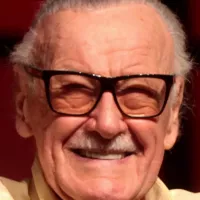
Stan Lee was a pivotal figure in the comic book...
Marvel Comics founded in as Timely Comics by Martin Goodman...
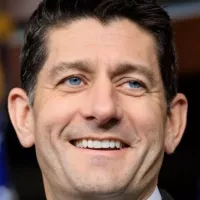
Paul Ryan is an American politician prominent for his role...
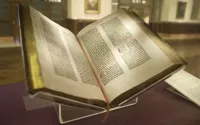
Books are a means of storing information as text or...
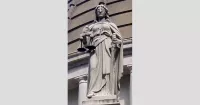
Justice in its broadest sense is the concept of treating...
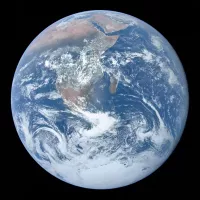
Earth the third planet from the Sun is unique in...
Trending
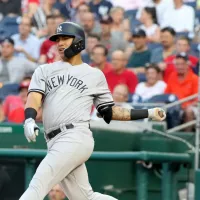
1 month ago Gleyber Torres Leads Tigers in ALDS Game 1; Greene & Torkelson Prop Bets
2 days ago Switzerland Secured US Trade Deal by Lobbying Trump with Gifts and Diplomacy
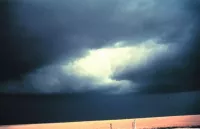
1 month ago Severe Thunderstorm Warning Issued for Kansas City Area; Hail Reported in Counties
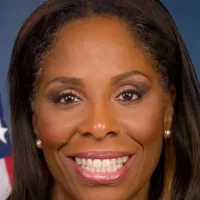
27 minutes ago House to vote on Plaskett censure after Epstein texts surface during Cohen hearing.

6 months ago Colorado Braces for Severe Storms: Tornado Watch, Large Hail, and Flooding Expected
4 months ago Srebrenica Massacre: Survivors live in shadow as Bosnia faces divided past, 30 years on.
Popular

XXXTentacion born Jahseh Dwayne Ricardo Onfroy was a controversial yet...
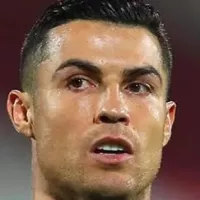
Cristiano Ronaldo often nicknamed CR is a Portuguese professional footballer...

Candace Owens is an American conservative political commentator and author...

Chuck Schumer is the senior United States Senator from New...
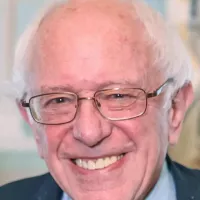
Bernie Sanders is a prominent American politician currently serving as...

Vivienne Westwood was a highly influential English fashion designer and...
